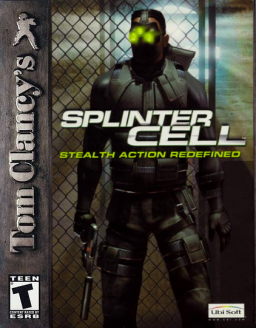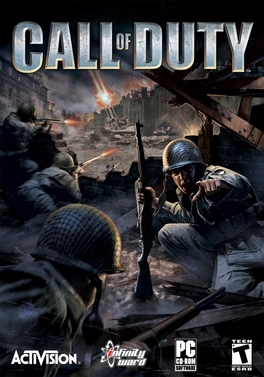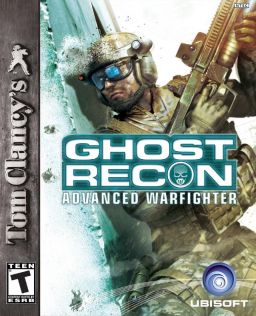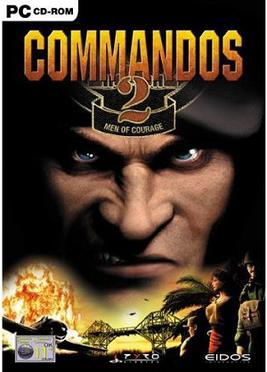
The Simpsons: Road Rage is a 2001 racing video game based on the animated television series The Simpsons, and is part of a series of games based on the show. It was released for PlayStation 2, Xbox and GameCube. A Game Boy Advance version was released in 2003.

Tom Clancy's Ghost Recon is a tactical shooter video game developed by Red Storm Entertainment and published by Ubi Soft in 2001 for Microsoft Windows. It is the first game in the Ghost Recon series. It was ported to Mac OS, Xbox and PlayStation 2 in 2002 and to the GameCube in 2003. Ports for N-Gage and Game Boy Advance were planned, but later canceled. Unlike Clancy's other tactical shooter series, Rainbow Six, Ghost Recon is not based on any of his books.

Tom Clancy's Splinter Cell is a 2002 stealth game developed by Ubisoft Montreal and published by Ubisoft. It is the first game in the Splinter Cell series. Endorsed by author Tom Clancy, it follows the activities of NSA black ops agent Sam Fisher. The game was inspired by both the Metal Gear series and games created by Looking Glass Studios, and was built using Unreal Engine 2.

Call of Duty is a 2003 first-person shooter game developed by Infinity Ward and published by Activision. It is the first installment in the Call of Duty franchise, released on October 29, 2003, for Microsoft Windows. The game simulates infantry and combined arms warfare of World War II using a modified version of the id Tech 3 engine. Much of its theme and gameplay is similar to the Medal of Honor series; however, Call of Duty showcases multiple viewpoints staged in the American, British, and Soviet campaigns of World War II in Europe.

Medal of Honor: Rising Sun is a first-person shooter video game, the fifth installment of the Medal of Honor series, released by EA Games in November 2003. Rising Sun is set in World War II, during the Pacific War. It features single-player and multiplayer capabilities, with multiplayer terminated as of 2007. In single-player mode, the player assumes the role of Joseph Griffin of the United States Marine Corps.

Medal of Honor: Frontline is a first-person shooter video game, in the Medal of Honor series, and was published by Electronic Arts. The player character is Lt. Jimmy Patterson, from the American Office of Strategic Services. Frontline takes place during the events of the first game and chronicles Patterson's journey as he fights his way across Europe into Nazi Germany during World War II. Frontline was released in North America for the PlayStation 2 on May 29, 2002 and for the GameCube and Xbox consoles on November 7, 2002.

James Bond 007: Nightfire is a 2002 first-person shooter video game published by Electronic Arts for the GameCube, PlayStation 2, Xbox and Microsoft Windows, with additional versions released for the Game Boy Advance in 2003, and the Mac OS X in 2004. The computer versions feature modifications to the storyline, different missions and the removal of driving sections used in home console versions.

Soulcalibur II is a 2002 fighting game developed by Project Soul and published by Namco and the third installment in the Soulcalibur series of weapon-based fighting games. It is the sequel to Soulcalibur, which was released in July 1998. Originally intended to be released on Sega's NAOMI board, the game was released on the Namco System 246 arcade board before being ported to the PlayStation 2, GameCube, and Xbox in 2003.

Driver 3 is a 2004 action-adventure game, the third installment in the Driver series. It was developed by Reflections Interactive, published by Atari, and released on PlayStation 2, Xbox and mobile phones in June 2004, Microsoft Windows in March 2005, and Game Boy Advance in October 2005. The game's story focuses on players assuming the role of John Tanner, an undercover FBI agent, as he investigates a car-smuggling ring across three countries, in order to identify and arrest its boss and learn who they are planning to sell a cache of stolen cars to. The game expanded upon its predecessors with on-foot sections, gun combat, and drive-by shooting, with virtual recreations of three major cities - Miami, Nice, and Istanbul - free-roam game mode, and an improvement to the series' film-making "director mode".

Call of Duty: Finest Hour is a first-person shooter video game developed by Spark Unlimited and published by Activision for GameCube, PlayStation 2, and Xbox. It is the first console installment of Call of Duty.

Tom Clancy's Splinter Cell: Chaos Theory is a stealth game developed by Ubisoft Montreal and Ubisoft Milan. The game was released for GameCube, PlayStation 2, Windows and Xbox in March 2005. Handheld versions for the Nintendo DS, mobile, and N-Gage were also released. A Game Boy Advance port was planned but later cancelled.

Shadow the Hedgehog is a 2005 platform game developed by Sega Studios USA and published by Sega as part of the Sonic the Hedgehog series. The game follows its amnesiac titular character as he attempts to learn about his past, while an alien invasion plagues Earth. Shadow the Hedgehog reintroduces third-person shooter elements from Sonic Adventure and Sonic Adventure 2, but greatly expands upon the concept and introduces nonlinear gameplay to the Sonic franchise. To defeat enemies and progress through the game, Shadow can use a variety of weapons from each faction and complete missions that will determine the game's plot and subsequently playable levels.

Delta Force: Black Hawk Down is a first-person shooter video game developed by NovaLogic. It was released for Microsoft Windows on March 25, 2003; for Mac OS X in July 2004; and for PlayStation 2 and Xbox on July 26, 2005. It is the 6th game of the Delta Force series. It is set in the early 1990s, during the Unified Task Force peacekeeping operation in Somalia. The missions take place primarily in the southern Jubba Valley and the capital Mogadishu. The game also features a mission editor with which players can make custom missions. The game is based on the book of the same name, not the Sony film.

Secret Weapons Over Normandy is a World War II-based arcade video game. Published by LucasArts and developed by Totally Games, the game is composed of 15 objective-based missions set in 1940s European, North African, and the Pacific theatres of war. The story was written by Derek Chester. The music was composed by Michael Giacchino.

Tom Clancy's Ghost Recon Advanced Warfighter (GRAW) is a tactical shooter video game released for the Xbox 360, Xbox, PlayStation 2 and Microsoft Windows in 2006. As in previous Ghost Recon games, players command their team while neutralizing hostile forces and completing various mission objectives. These objectives can range from escorting friendly units across the map to rescuing hostages or taking out enemy artillery.

Commandos 2: Men of Courage is a real-time tactics video game, developed by Pyro Studios, published by Eidos Interactive, and released on September 20, 2001. It is a sequel to Commandos: Behind Enemy Lines and the second installment of the Commandos series, and is the only strategy game of the series to be designed not only for Microsoft Windows, but also for PlayStation 2 and Xbox. The game sees players taking control of a squad of commandos, along with various allied units, as they sneak behind enemy lines to accomplish various missions in World War II, between 1941 and 1944, that will help them to thwart the war efforts of the Germans and the Japanese. The game features several improvements to the gameplay from its predecessor, including the ability to use enemy weapons and explore interior locations, the inclusion of three new commandos, a number of new skills for the original six members along with their other abilities, and new pieces of equipment to help overcome the enemy.

SpyHunter is a vehicular combat game. It is a remake and sequel of the 1983 arcade game of the same name first released for PlayStation 2 in 2001. It has since been ported to GameCube, Xbox, Game Boy Advance, Microsoft Windows, OS X, and Tapwave Zodiac. In the game, the player drives the G-6155 Interceptor, an advanced, weaponized spy vehicle. Unlike the original's top-down view, the remake is played with a chase camera, similar to a racing game.

Full Spectrum Warrior: Ten Hammers is a real-time tactics video game developed by Pandemic Studios and published by THQ for Microsoft Windows, PlayStation 2 and Xbox.

FIFA 07 is a football simulation video game developed by EA Canada and published by Electronic Arts under the EA Sports label.

Call of Duty: World at War is a 2008 first-person shooter game developed by Treyarch and published by Activision. It is the fifth main installment of the Call of Duty series and is the fourth entry in the series to be set during World War II. The game was announced by Activision in June 2008 and was released in November 2008, for PlayStation 3, Windows, Xbox 360, and Wii. Other games under the World at War title were published for the Nintendo DS and PlayStation 2, featuring different storylines and missions.





















